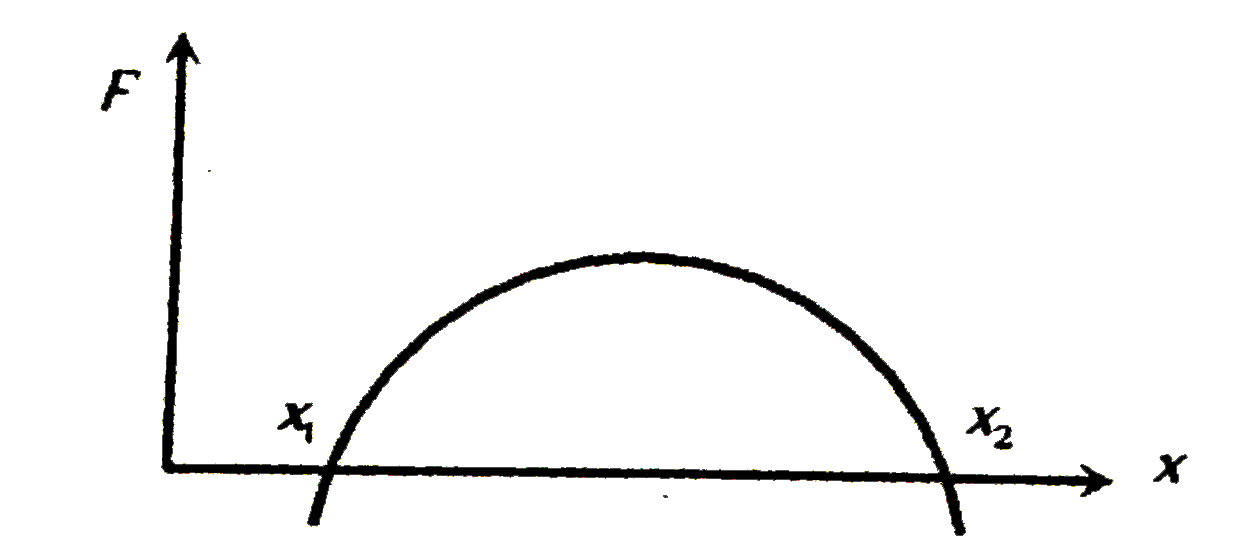A force is acting on a body moving along x-axis in the direction of motion of the body. If this force produces a potential energy u=Ax4, where A=1.2Jm−4, then the what is the force acting on the body when the body is at x=−0.8m?
Video Solution
Text Solution
Here, U=Ax4
Fx=−∂U∂x=∂∂x(Ax4)=−4Ax3
When x=−0.8m, then
Fx=−4×1.2(−0.8)3=2.46N
|
Updated on:21/07/2023
Topper's Solved these Questions
- BOOK - PRADEEPCHAPTER - WORK, ENERGY AND POWEREXERCISE - Very Short Anwer Question.54videos
WORK, ENERGY AND POWER
- BOOK - PRADEEPCHAPTER - WORK, ENERGY AND POWEREXERCISE - Short Answer Question52videos
WORK, ENERGY AND POWER
- BOOK - PRADEEPCHAPTER - WORK, ENERGY AND POWEREXERCISE - solved examples73videos
WORK, ENERGY AND POWER
- BOOK - PRADEEPCHAPTER - THERMODYNAMICSEXERCISE - Assertion- Reason Type Questions19videos
THERMODYNAMICS
Similar Questions
Knowledge Check
- Question 1 - Select One
A force is acting on a body. The body will move with
Auniform velocity,Buniform accelerationCuniform retardation,DNone of these. - Question 2 - Select One
If the net force acting on a body is zero then the body is said to be in
AunbalancedBbalancedCequilibriumDnone - Question 3 - Select One
An unbalanced force acts on a body. The body
Amust remain at restBmust move with uniform velocityCmust be acceleratedDmust move along a circle
A force acts perpendicular to the direction of motion of a body. What is work done?
View Solution……. Force is acting on a body ……or in ……with …… according to……. .
View SolutionIf no force acts on a body, it will
View SolutionThe force acting on a body moving along x-axis varies with the position of the particle shown in the figure. The body is in stable equilibrium at
 . View Solution
. View SolutionThe force acting on a body moving along x -axis varies with the position of the particle as shown in the fig. The body is in stable equilibrium at.
 View Solution
View Solution

